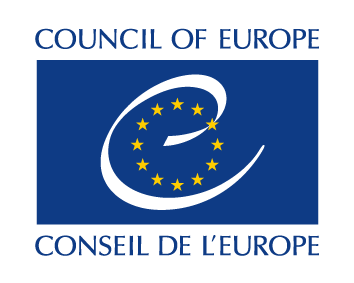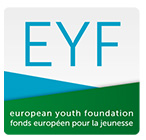A Week Later… Our reflections on COP26
Global reactions to the outcomes of COP26 have been critical to put it lightly. The UN Secretary General, Antionio Guterres, stated himself that “The approved texts are a compromise” and they are “not enough. It is time to go into emergency mode”.
World leaders have been more complimentary in their comments, praising compromise, while activists, civil society and grassroots movements took to the streets almost everyday during the two weeks in Glasgow alone, in varying sizes of protest, to criticize the inaction of COP26. Greta Thunberg did not hold back denouncing the summit as a “failure”.
Nonetheless, this COP26 represented a moment that brought together a global climate dialogue and added oxygen to the fire of the environmental and climate movement.
YEE at COP26
COP26 was the first COP that YEE attended. With NGO observer badges we got access to the Green and Blue zone. Most of our time was spent at side events, listening in on plenaries and, when we could, meeting and discussing with key actors such as Frans Timmerman, the Vice-President of the European Commission, with whom we were delighted to be able to enter into dialogue three times in the second week of COP.
Delegates’ highlights
It was moments like these which were “highlights” according to our delegate and Board Member, Paola, who also called attention to
“other great moments included meeting head of Greenpeace Jennifer Morgan and entering plenaries to hear countries representatives discuss their plans.”
Other delegates had specific targets, such as Naïs, our Treasurer, who said her “ time with YEE was spent meeting with funders, discussing fundraising strategies and meeting some of our member organisations”.
Vadim, our delegate from Russia, concluded: “My first COP26 is over, and for me it was a tremendous experience. The time I spent in Glasgow was full of in-person meetings, collective work, official and informal events, panel discussions, and conversations with policymakers.”
Delegates’ disappointments
For all the highs we had at COP26, there were an equal amount of lows. Our delegate, Anna, poignantly described:
“While at first I was enjoying the variety of the Pavilions, a realization gradually formed and then suddenly struck me about this environment: turns out we won’t have access to the negotiating rooms for at least the first two days of the conference – and yes, apparently there was a Bluer Zone at the end of that aisle.”
Besides, as a colleague has rightfully noted, most of the Green Zone exhibition area had basically been “eaten” by businesses and corporations “selling” themselves, rather than being fully dedicated to civil society.
As the days got busier and busier for us Observers, following the actual negotiations and getting updates on what was happening behind closed doors turned out to be less difficult from the outside than from inside the Blue Zone.
Many hours were spent queuing to enter venues and rooms, and even then, due to capacity limitations and the priority of party delegates over civil society, we did not enter all the events we were aiming for.
Accessibility issues
A key issue we faced was accessibility, despite our badges. This COP has been dubbed “the most exclusive COP ever” between visa and travel issues, which we ourselves experienced with our Armenian delegate not getting his visa approved, to the actual layout of the venue. Our delegate Anna explained:
“We were ready to bring youth voices in every conversation and negotiating room, but the reality was that we found it quite hard to even get access to some events on youth day.”
Moreover, “Youth, indigenous people, and civil society as a whole, should not be part of the dialogue only on a dedicated single day – which, by the way, seriously lacked the opportunity for active and meaningful youth engagement – and then be forgotten during the rest of the conference.
After all, would it really make sense to host a Youth4Climate, forever, as announced by the Italian Minister of Ecological Transition, if the final text of this youth collective effort is not even remotely taken into consideration or vaguely mentioned in the COP26 outcomes?”
COP26 – both incredible and exhausting
Overall, the two weeks were “both incredible and exhausting” as Paola put it. For our delegation, COP26 represented also an occasion to meet each other after over a year of working digitally together, spread across Europe. It represented an occasion to meet representatives of our Member Organisations, to meet other activists and discover wonderful organisations.
This is best recounted by Anna: “I got to meet some dear colleagues in person for the first time, and I had the chance to meet and listen to the stories of so many more climate activists from all over the world. Especially during the protests of the Global Day of Action, experiencing the power of a community getting together and rising up to ask for climate justice, both the global youth community and my YEE community, will always represent one of the most heart-warming experiences of my life and it is what gives me hope for the future of my action as a young environmentalist.”
Hearing other voices of the environmental movement was fundamental to our motivation as our delegate Hajar expressed “I was pleasantly surprised to witness the power of the collective and what civil society was able to do around the event itself. It was this strength that made me realize that I was legitimate enough at COP26 and that the voices I wanted to represent also were.”
A week after COP26, we are still reflecting on our experience and looking to see how the conclusions taken at COP26 will translate into national and European action. Young people are watching – even if the media attention dies down, young civil society is paying attention.
Written by Chloé ten Brink.
If you have any questions or queries, feel free to direct them to chloe@yeenet.eu
A big thank you to Hajar, Paola, Anna, Vadim and Naïs for their inputs. Thank you to Nathan and Pegah for the team management and wonderful support.



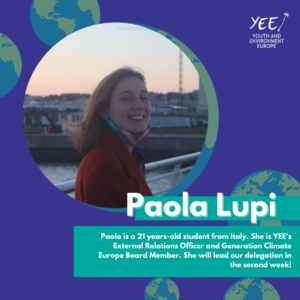
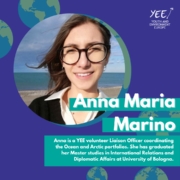 “Before heading to Glasgow, I struggled to shape realistic expectations: aware that the whole world was going to watch and that expectations and media sensationalism were going to escalate as the start date was approaching, and considering that it was my first COP participation ever, I was mostly trying to be as ready as possible to get to Glasgow with an ambitious policy position. I was sure that this would be for me the first real chance to gain full insights into how the UN system works in the context of global climate change negotiations, by living it as an insider – I was particularly curious and enthusiastic for taking part in what was announced to be the most important (and inclusive) COP ever done until now.
“Before heading to Glasgow, I struggled to shape realistic expectations: aware that the whole world was going to watch and that expectations and media sensationalism were going to escalate as the start date was approaching, and considering that it was my first COP participation ever, I was mostly trying to be as ready as possible to get to Glasgow with an ambitious policy position. I was sure that this would be for me the first real chance to gain full insights into how the UN system works in the context of global climate change negotiations, by living it as an insider – I was particularly curious and enthusiastic for taking part in what was announced to be the most important (and inclusive) COP ever done until now.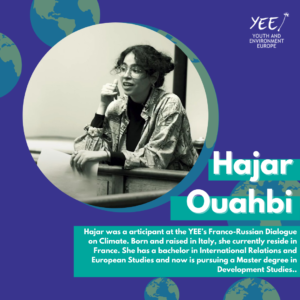 “This week at COP26 made me realize two things: I still want to fight for tomorrow, but I have less and less faith in the institutional strength to do so. It was the first time I attended such an event and it is true that I had no idea how it would unfold. On the other hand, I was pleasantly surprised to witness the power of the collective and what civil society was able to do around the event itself. It was this strength that made me realize that I was legitimate enough at COP26 and that the voices I wanted to represent also were.”
“This week at COP26 made me realize two things: I still want to fight for tomorrow, but I have less and less faith in the institutional strength to do so. It was the first time I attended such an event and it is true that I had no idea how it would unfold. On the other hand, I was pleasantly surprised to witness the power of the collective and what civil society was able to do around the event itself. It was this strength that made me realize that I was legitimate enough at COP26 and that the voices I wanted to represent also were.”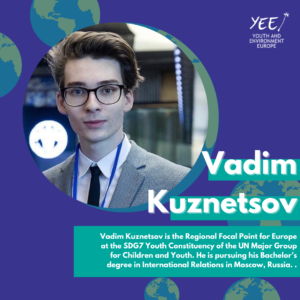 “My first COP26 is over, and for me it was a tremendous experience. The time I spent in Glasgow was full of in-person meetings, collective work, official and informal events, panel discussions, and conversations with policymakers. I was happy to meet outstanding young professionals from Youth and Environment Europe and contribute to the joint policy advocacy.
“My first COP26 is over, and for me it was a tremendous experience. The time I spent in Glasgow was full of in-person meetings, collective work, official and informal events, panel discussions, and conversations with policymakers. I was happy to meet outstanding young professionals from Youth and Environment Europe and contribute to the joint policy advocacy. “I was lucky to attend COP26 in Glasgow with YEE as one of their delegates. My time with YEE was spent meeting with funders, discussing fundraising strategies and meeting some of our member organisations. In the context of COVID and as YEE is an international organisation, most of our work is conducted online. I am so grateful to have been able to (finally) meet and spend time with everyone in person!
“I was lucky to attend COP26 in Glasgow with YEE as one of their delegates. My time with YEE was spent meeting with funders, discussing fundraising strategies and meeting some of our member organisations. In the context of COVID and as YEE is an international organisation, most of our work is conducted online. I am so grateful to have been able to (finally) meet and spend time with everyone in person! YEE aims to unite environmental youth non-profit organisations in Europe in order to enhance international cooperation, increase knowledge about the climate crisis, raise awareness of environmental problems and to strengthen participation of youth in environmental decision-making.
YEE aims to unite environmental youth non-profit organisations in Europe in order to enhance international cooperation, increase knowledge about the climate crisis, raise awareness of environmental problems and to strengthen participation of youth in environmental decision-making.